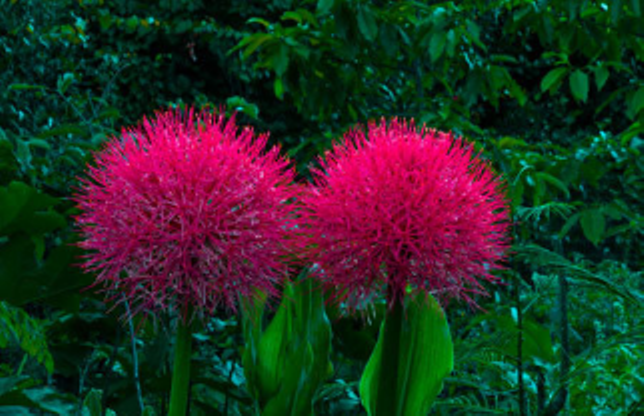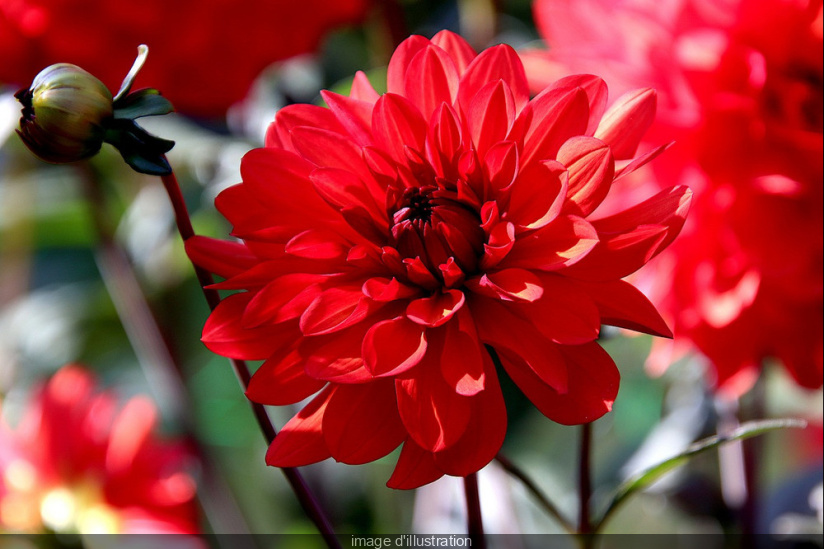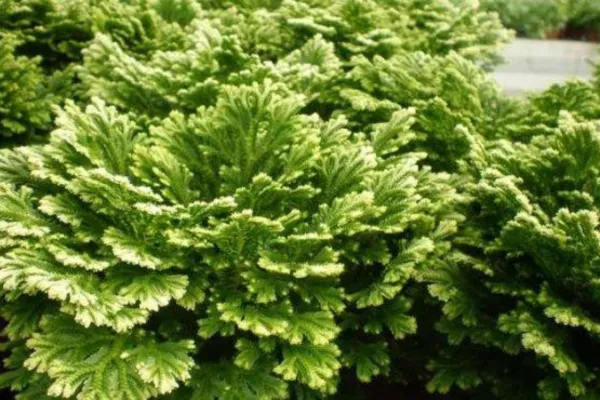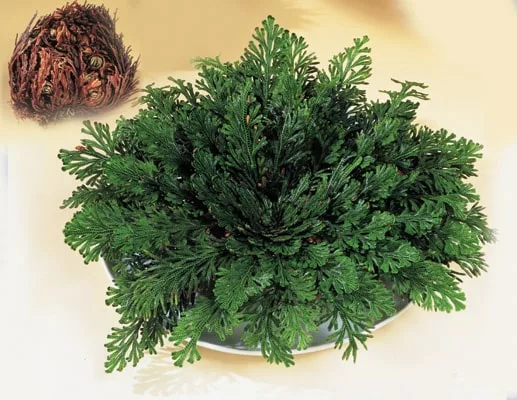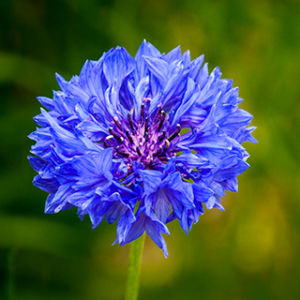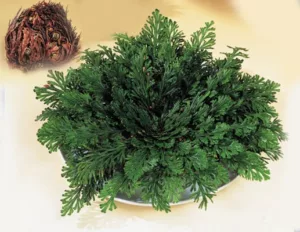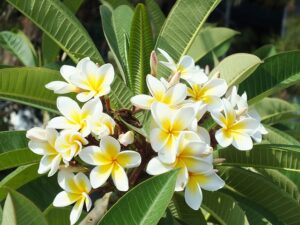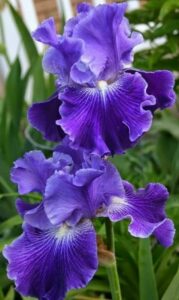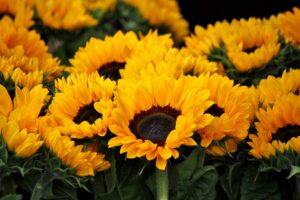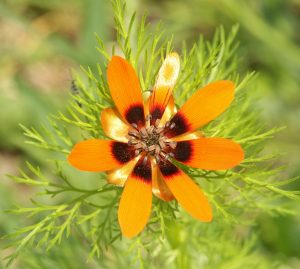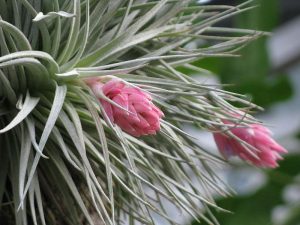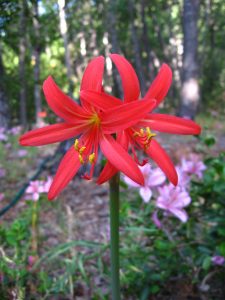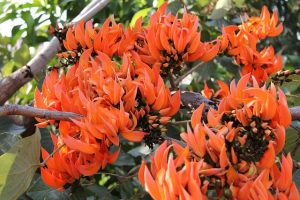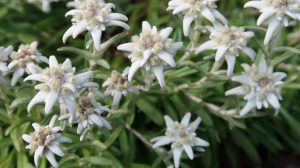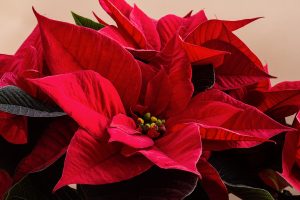The Flower Pincushion: its origin, characteristics and care
Hello friends, all flowers have their characteristic and special color and shape, but today’s flower is really strange, and that is what gives rise to its popular name: “Ball of Fire or Pincushion.”
The scientific name for the Pincushion Flower is Scadoxus Multiflorus and it is native to the tropical forests of southern Africa. It is also known by other names such as “Blood lily, Blood flower and Bengal“.
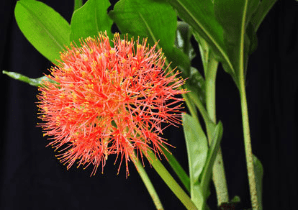
Origin
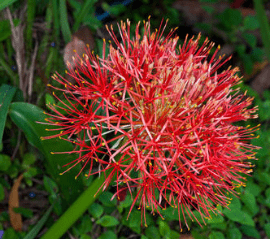
Previously this plant belonged to the genus Haemanthus multiflorus, but after a deeper study it was determined to separate the group of Scadoxus multiflorus. The separation was due to their differences in morphological characteristics. It is from the Amaryllidaceae family, to which several bulbous plants belong. It was recorded in 1838 by the American named Constantine Samuel Rafinesque Schmaltz (of European origin), who was a naturalist, meteorologist, and archeologist.
Features and care
The Blood lily reproduces through bulbs, and a peculiar feature it has is that it blooms first and then the leaves grow. It is very curious, right?
You should plant several bulbs nearby and in a cool and bright place, so you can enjoy their flowering, since each one only blooms once a season. Its flowers are born in mid or late spring from the only stem that generates the bulb, giving rise to the amazing influence (arrangement of the flowers on the branches or the tip of the stem), made up of countless small flowers grouped in a perfect sphere and last approximately 2 weeks.
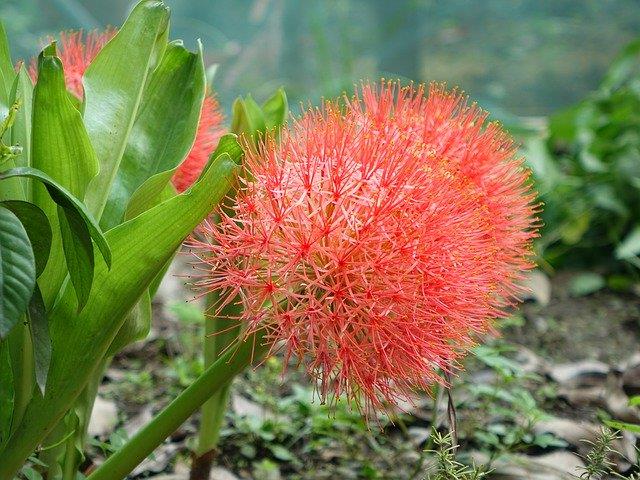
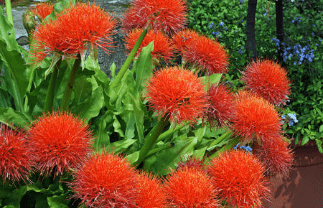
As the flowers fade, the leaves begin to grow, arranged in a spiral and with a very striking green color. These are about 20 to 35 cm long and 10-15 cm wide. In autumn the leaves begin to dry, until they fall completely before winter, so in spring they begin their cycle again.
Its watering should be weekly, a little more frequent if it is very hot, but the soil cannot be soaked in water, as it can make the bulbs sick. When the leaves begin to fall, you don’t need any more watering until spring. It can be up to 120 cm tall.
Plagues and diseases
The Pincushion Flower is quite resistant to pests, however, it can be attacked by mealybugs, nematodes, mole crickets and mites. Furthermore, the bulbs can be affected by different types of fungi, generally related to excess moisture.
Use
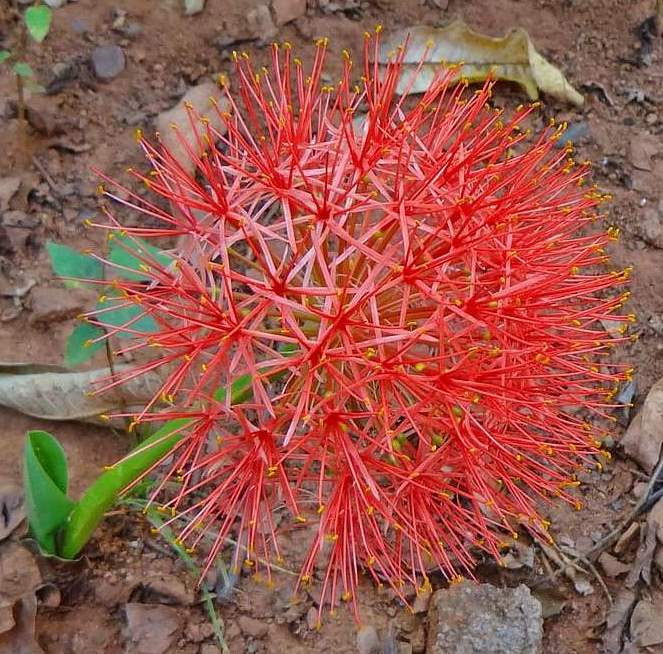
The Pincushion Flower is highly poisonous, as it contains alkaloids in all its parts, but it will not be dangerous to have it in the garden if there is no animal that eats it. In Africa it is used in the ends of the arrows or poison for the fishing. It is also used in traditional medicine, in minimal doses to combat cough and other diseases. However, its best use is Ornamental, because even after cutting the flowers have a long duration.
So far the information related to the plant today, I hope you found it useful.
You can follow us on our Facebook page.
If so, share the information with your friends on social networks and leave us your comments here.

Share this content:
